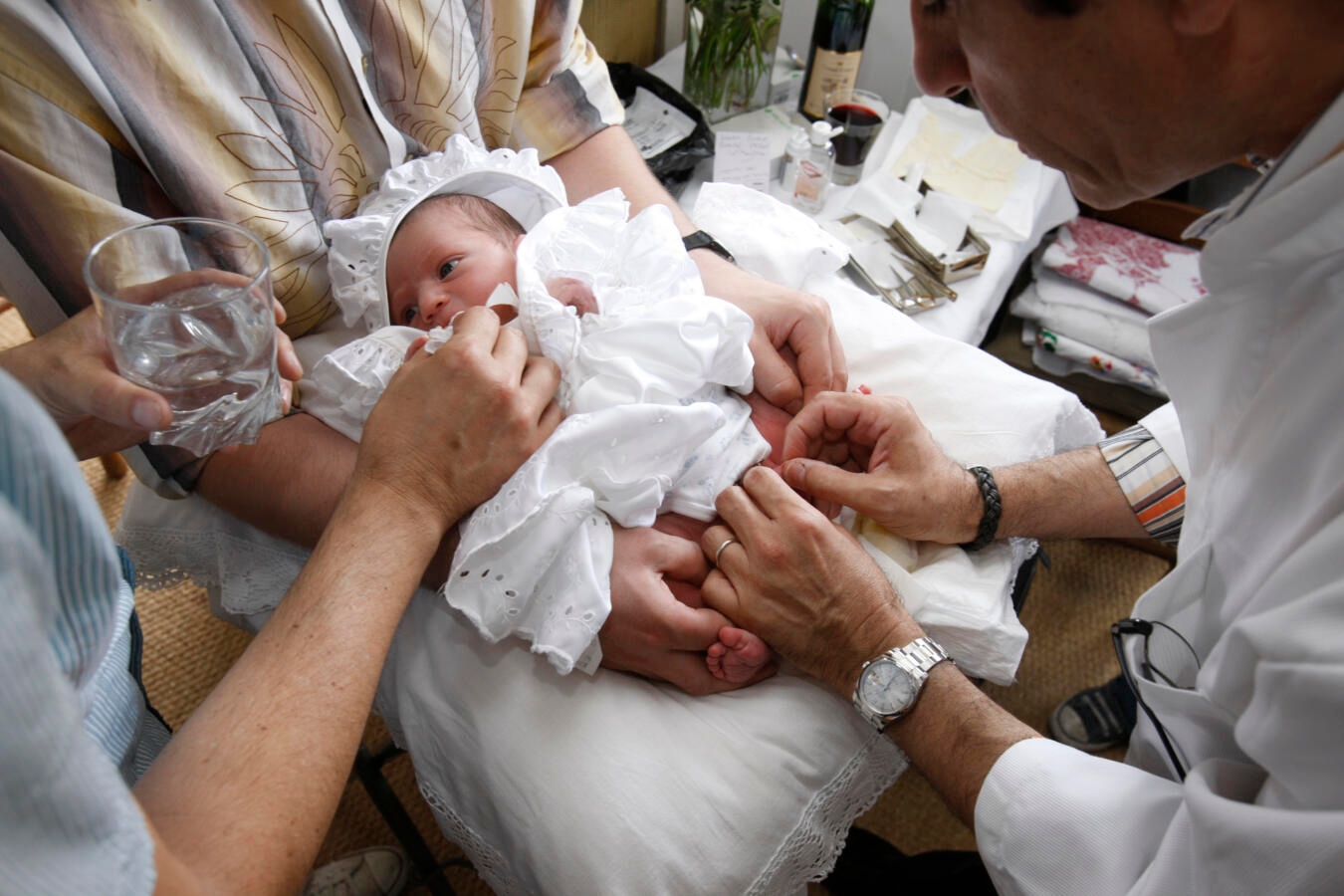The first mohel (usually pronounced so it rhymes with “boil”) was a 99-year-old ex-shepherd with no medical training whatsoever. There is no record of how he performed the procedure but, given that he was his own first subject, it is unlikely that Abraham used an anesthetic.
Things have changed since then. Circumcision is probably the best-known indication of Jewishness in a male (if not the most immediately visible!). It is also the oldest and one of the most widely followed of Jewish ritual practices. Abraham circumcised himself and his sons, Isaac and Ishmael; Zipporah circumcised Gershom, her first-born son. At first, like those estimable forebears, fathers and, apparently, occasionally mothers would circumcise their own sons, with a stone knife, usually of flint.
Through all the upheaval of conquering Canaan, building the Temple, being sent into exile in Babylon, and returning and rebuilding the Temple, the Jews still practiced circumcision. Gradually, it became the province of specially trained men, the mohelim, who were learned in the ritual elements surrounding the procedure (and probably no more ignorant of medicine than the average physician of the period). By the period of the Second Temple, they were using iron knives, and reciting the blessings that are still used today. Initially the brit was a family celebration, but with time it became a festivity that would involve the entire community. By the Middle Ages, the brit milah was usually performed in the synagogue, with the entire congregation active participants in the festivities.
With your help, My Jewish Learning can provide endless opportunities for learning, connection and discovery.
For more about Jewish parenting, visit our partner site, Kveller.
Today, the mohel is considerably better trained than his historical antecedents. Or hers, as the case may be, as the non-Orthodox movements now certify women physicians for the role of mohelet (the female form of mohel). Historically, there were women who acted as circumcisers in medieval Italy and perhaps at other times in history. Today, there are mohalot (plural of mohelet) in the Reform and Conservative movements.
READ: How to Care for Your Newly Circumcised Baby
A mohel (or mohelet) is still trained in the ritual of circumcision according to the rules prescribed in classical rabbinic texts and subsequent law codes from the medieval period. However, today’s mohel will also have been educated in modern surgical hygiene. The Reform movement in particular has taken an active interest in certifying mohelim who are doctors: They undergo training in the theology, history, and liturgy of the brit milah. A increasing number of Orthodox mohelim are also physicians.
Today’s mohel will examine the baby to certify that he is healthy enough to undergo the procedure (unless a doctor has decided he cannot). If he is not, it must be postponed to a later date. As usual in matters of physical health, Judaism takes a cautious approach, and mohelim are generally more strict on this issue than doctors.
READ: Find A Mohel in Your Area
A brit milah always takes place during the day, usually in the morning, in the home or synagogue. The mohel will lead the ceremony, which is brief. It is preferable to have a minyan (a quorum of ten) present, but not essential; a brit can be performed by the mohel with no one but the father present.
The procedure itself is very brief. The mohel uses a magen or shield to protect the glans and guide the knife. He may use a silver probe to loosen the foreskin before beginning. There are three phases to the procedure: me’ilah, the actual removal of the foreskin; p’riah, the tearing of the genital membrane underneath the foreskin back to the corona; and m’tzitzah–suction–the removal of blood and cleaning of the affected area. In ancient tradition, the mohel would actually suck the blood away; this was believed to have a disinfectant effect. By the 19th century, with the advent of the germ theory of illness, Jews realized that it actually had the opposite effect. Today, a mohel will probably utilize a glass tube and a cotton swab. The mohel will put a sterile bandage on the incision and then the boy is dressed.
In Jewish law it is still technically the responsibility of a father to circumcise his own sons. The mohel is merely his agent in this procedure.
For more about Jewish parenting, visit our partner site, Kveller.
brit milah
Pronounced: breet mee-LAH, Origin: Hebrew, literally "covenant of circumcision," the Jewish circumcision ceremony for an 8-day-old boy, marking the covenant between God and the Jews. Also known as a bris.
minyan
Pronounced: MIN-yun, meen-YAHN, Origin: Hebrew, quorum of 10 adult Jews (traditionally Jewish men) necessary for reciting many prayers.


